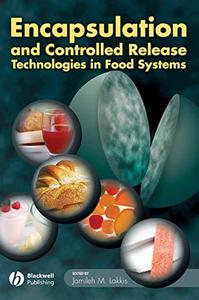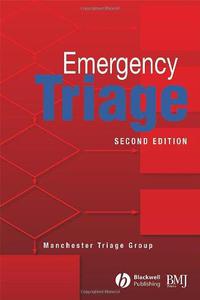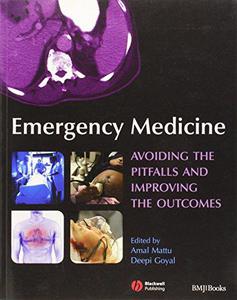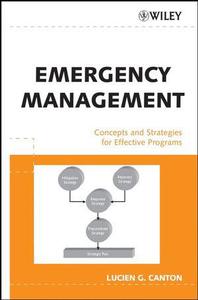
 |
 Engaging 'Hard to Reach' Parents: Teacher-Parent Collaboration to Promote Children's Learning By Anthony Feiler(auth.) 2010 | 175 Pages | ISBN: 0470682299 | PDF | 3 MB A practical guide to establishing positive relationships with hard-to-reach parents. Includes research-based techniques for teachers on how to reach hard-to-reach parents, carers, and guardiansContent: Chapter 1 Introduction (pages 1-18): Chapter 2 Types of Engagement, Explanations and Risk Factors (pages 19-53): Chapter 3 International Perspectives (pages 55-80): Chapter 4 Successful Projects in the United Kingdom (pages 81-99): Chapter 5 The Place of Home Visiting (pages 101-123): Chapter 6 Caveats and Concerns (pages 125-135): Chapter 7 Creating More Approachable Schools and Other Settings (pages 137-153):  Energy Technology 2012: Carbon Dioxide Management and Other Technologies By 2012 | 394 Pages | ISBN: 1118291387 | PDF | 15 MB Proceedings of symposia sponsored by the Energy Committee of the Extraction and Processing Division and the Light Metals Division of TMS (The Minerals, Metals & Materials Society)Held during the TMS 2012 Annual Meeting & Exhibition Orlando, Florida, USA, March 11-15,2012Content:  Endovascular Therapy: Principles of Peripheral Interventions By 2006 | 310 Pages | ISBN: 1405124237 | PDF | 5 MB If you are one of the many physicians from different specialty disciplines who perform endovascular interventions then this practical reference will help you to develop your endovascular skills and encompass them into daily practice.Endovascular Therapy covers everything you need to know about creating an endovascular program, such as imaging, catheter and device inventory, nursing support, and technician support.In addition, this book provides a basic knowledge of the pathophysiology of vascular disease, interventional techniques, and endovascular modalities of various disease categories. Each individual disease and endovascular therapy is discussed and emphasis is placed on the relevant complications associated with the wide spectrum of endovascular interventions.Also included are step-by-step guides to procedure conduct, tips and tricks, procedure specific equipment lists, and recommended post procedure orders and follow up.Content: Chapter 1 General Principles of Endovascular Therapy (pages 1-19): Imran Mohiuddin, Panagiotis Kougias and Ross MilnerChapter 2 Basic Science of Endovascular Therapy (pages 20-37): Panagiotis Kougias, Liz Nguyen and Changyi ChenChapter 3 Pharmacotherapy in Endovascular Interventions (pages 38-52): Leila Mureebe, Colleen M. Johnson and Changyi ChenChapter 4 Complications of Endovascular Therapy (pages 53-67): Gordon M. Riha, Changyi Chen and Ruth L. BushChapter 5 Carotid Bifurcation Disease (pages 68-87): Wei Zhou, Ruth L. Bush, Peter H. Lin and Alan B. LumsdenChapter 6 Supra?Aortic Trunk and upper Extremity Arterial Disease (pages 88-102): Imran Mohiuddin, Eric J. Silberfein and Eric PedenChapter 7 Thoracic Aortic Disease (pages 103-120): Andy C. Chiou, Kristen L. Biggs and Peter H. LinChapter 8 Abdominal Aortic Aneurysm (pages 121-138): W. Anthony Lee, Daniel J. Martin and Imran MohiuddinChapter 9 Mesenteric Artery Occlusive Disease (pages 139-153): Panagiotis Kougias, Mitchell Cox and Peter H. LinChapter 10 Renal Artery Occlusive Disease (pages 154-169): Peter H. Lin, Rakesh Safaya and W. Todd BohannonChapter 11 Aortoiliac Occlusive Disease (pages 170-185): Eric Peden, Ruth L. Bush and Alan B. LumsdenChapter 12 Lower Extremity Arterial Disease (pages 186-205): Wei Zhou, Marlon A. Guerrero and Alan B. LumsdenChapter 13 Arteriovenous Graft Interventions (pages 206-220): Joseph J. Naoum, Wei Zhou and Eric PedenChapter 14 Venous Insufficiency and Varicose Veins (pages 221-238): Panagiotis Kougias, Patrick E. Duffy and E. John HarrisChapter 15 Ileofemoral Deep Venous Thrombosis (pages 239-251): James P. Gregg, Esteban A. Henao and Alan B. LumsdenChapter 16 Vascular Trauma (pages 252-267): Ulises Baltazar, Esteban A. Henao, W. Todd Bohannon and Michael B. SilvaChapter 17 Endovascular Devices in Peripheral Interventions (pages 268-281): Russell Lam, Mai Pham and Rakesh Safaya
 End of Millennium: With a New Preface, Volume III, Second edition With a new preface By Manuel Castells(auth.) 2010 | 485 Pages | ISBN: 1405196882 | PDF | 5 MB This final volume in Manuel Castells' trilogy, with a substantial new preface, is devoted to processes of global social change induced by the transition from the old industrial society to the emerging global network society. Explains why China, rather than Japan, is the economic and political actor that is revolutionizing the global systemContent: Chapter 1 The Crisis of Industrial Statism and the Collapse of the Soviet Union (pages 5-68): Chapter 2 The Rise of the Fourth World: Informational Capitalism, Poverty, and Social Exclusion (pages 69-170): Chapter 3 The Perverse Connection: The Global Criminal Economy (pages 171-214): Chapter 4 Development and Crisis in the Asian Pacific: Globalization and the State (pages 215-341): Chapter 5 The Unification of Europe: Globalization, Identity, and the Network State (pages 342-370):  Encapsulation and Controlled Release Technologies in Food Systems By 2007 | 242 Pages | ISBN: 0813828554 | PDF | 5 MB In Encapsulation and Controlled Release Technologies in Food Systems, editor Lakkis has gathered a highly respected collection of expert contributors from industry and academia to highlight recent innovations in encapsulation and controlled release technologies in food systems. Unlike most recent publications which dealt exclusively with theoretical aspects of these technologies, this volume focuses mainly on devising effective and innovative applications in food systems in which these delivery vehicles operate. In addition, the book provides some emphasis on new opportunities that may arise from the development of new materials for the design and fabrication of delivery vehicles and carriers.Encapsulation and Controlled Release Technologies gives the reader a solid grasp of basic concepts of encapsulation technologies and their novel applications in food systems. Dr. Lakkis also presents novel possibilities of encapsulation and controlled release along with a discussion on future perspectives and economical implications of these technologies.Content: Chapter 1 Introduction (pages 1-11): Jamileh M. LakkisChapter 2 Improved Solubilization and Bioavailability of Nutraceuticals in Nanosized Self?Assembled Liquid Vehicles (pages 13-40): Nissim Garti, Eli Pinthus, Abraham Aserin and Aviram SpernathChapter 3 Emulsions as Delivery Systems in Foods (pages 41-81): Ingrid A.M. Appelqvist, Matt Golding, Rob Vreeker and Nicolaas Jan ZuidamChapter 4 Applications of Probiotic Encapsulation in Dairy Products (pages 83-112): Ming?Ju Chen and Kun?Nan ChenChapter 5 Encapsulation and Controlled Release in Bakery Applications (pages 113-133): Jamileh M. LakkisChapter 6 Encapsulation Technologies for Preserving and Controlling the Release of Enzymes and Phytochemicals (pages 135-147): Xiaoyong Wang, Yan Jiang and Qingrong HuangChapter 7 Microencapsulation of Flavors by Complex Coacervation (pages 149-170): Curt ThiesChapter 8 Confectionery Products as Delivery Systems for Flavors, Health, and Oral?Care Actives (pages 171-200): Jamileh M. LakkisChapter 9 Innovative Applications of Microencapsulation in Food Packaging (pages 201-211): Murat Ozdemir and Tugba CevikChapter 10 Marketing Perspective of Encapsulation Technologies in Food Applications (pages 213-233): Kathy Brownlie  Walter Pohl, "Empires and Communities in the Post-Roman and Islamic World, C. 400-1000 CE " English | ISBN: 0190067942 | 2021 | 464 pages | PDF | 5 MB This is an open access title available under the terms of a CC BY-NC 4.0 International licence. It is free to read at Oxford Scholarship Online and offered as a free PDF download from OUP and selected open access locations.  Empath and Psychic Abilities: How to Stop Absorbing Other People's Negative Energy and Avoid Emotional Burnout | A Practical Guide for Highly Sensitive ... by Ellen J. Cure English | 2022 | ISBN: N/A | ASIN: B09Q6B5KRM | 320 pages | EPUB | 1.42 Mb Do you find yourselfconfused and exhaustedafter consuming others' emotions?  Emergency Triage, Second Edition By 2005 | 187 Pages | ISBN: 0727915428 | PDF | 2 MB The Manchester Triage System (MTS) is the most widely used triage system in the UK, Europe and Australia, with tens of millions of patients being processed through hospital emergency departments. Emergency Triage is the core text for the MTS which utilises a risk averse system of prioritisation for patients in all unscheduled care settings, and as such it is an essential text for all emergency department staff using the MTS, in particular triage nurses themselves. The second edition has been revised throughout and takes in the changes in practice introduced into MTS since the book was first published. These include: Redesigned and expanded flow chartsAdditional charts for allergy and palpitationsNew practices - such as the possibility of revascularisation for patients with strokeNew discriminators, for example acute neurological deficit and significant respiratory historyRedefinition of existing discriminators Also new to this edition is the incorporation of sections on the use of the risk averse system in telephone triage, in settings where 'streaming' takes place and as an early warning score for patients in all unscheduled care settings. The tone of this edition reflects the more up to date, modified approach to triage while retaining the principles of clinical prioritisation, which in the authors' words "remains a central plank of clinical risk management in emergency care". Emergency Triage is an essential handbook for all clinicians involved in unscheduled care settings such as emergency care, walk in centres, minor injury units, primary care out of hours services.Content: Chapter 1 Introduction (pages 1-4): Chapter 2 The Decision?Making Process and Triage (pages 5-9): Chapter 3 The Triage Method (pages 10-20): Chapter 4 Pain Assessment as Part of the Triage Process (pages 21-28): Chapter 5 Patient Management, Triage and the Triage Nurse (pages 29-34): Chapter 6 Auditing the Triage Process (pages 35-39): Chapter 7 Telephone Triage (pages 40-44): Chapter 8 Beyond Prioritisation (pages 45-49):  Emergency Medicine: Avoiding the Pitfalls and Improving the Outcomes By 2007 | 119 Pages | ISBN: 1405141662 | PDF | 3 MB Emergency Medicine is a brand new book focusing on the common pitfalls and mistakes that can occur when dealing with high-risk conditions during standard medical practice. Concise chapters focus on clinical relevance, addressing the mistakes, the consequences and the knowledge necessary to avoid high-risk mistakes. An essential book for all staff dealing with emergencies.Content: Chapter 1 Evaluation and Management of Patients with Chest Syndromes (pages 1-16): Richard A. Harrigan and Michael A. DeAngelisChapter 2 Management of the Dyspneic Patient in the ED (pages 17-24): Jairo I. Santanilla and Peter M. C. DeBlieuxChapter 3 Evaluation and Management of the Patient with Abdominal Pain (pages 25-32): Joseph P. MartinezChapter 4 Management of Patients with Acute Back Pain in the ED (pages 33-38): Michael E. WintersChapter 5 Headache Management (pages 39-45): Stephen SchenkelChapter 6 Evaluation and Management of the Patient with Neck Pain (pages 46-54): Joshua Broder and Anita L'ItalienChapter 7 Trauma Management in the ED (pages 55-62): David E. Manthey and Bret A. NicksChapter 8 Management of Infectious Diseases (pages 63-71): David J. Karras, Wayne A. Satz and Jeffrey BarrettChapter 9 Wound Care in Emergency Medicine (pages 72-78): Siamak Moayedi and Mercedes TorresChapter 10 Management of the Pregnant Patient in the ED (pages 79-84): Kristine ThompsonChapter 11 Pediatric Care in the ED (pages 85-92): Ghazala SharieffChapter 12 Management of Hematology/Oncology Patients in the ED (pages 93-98): Robert L. RogersChapter 13 Management of Intoxicated/Violent Patients (pages 99-108): Yesha Patel and Gus M. Garmel  Emergency Management: Concept and Strategies for Effective Programs By Lucien G. Canton(auth.) 2007 | 358 Pages | ISBN: 047173487X | PDF | 12 MB This book propounds an all-hazards, multidisciplinary approach to emergency management. It discusses the emergency manager's role, details how to establish an effective, integrated program, and explores the components, including: assessing risk; developing strategies; planning concepts; planning techniques and methods; coordinating response; and managing crisis. Complete with case studies, this is an excellent reference for professionals involved with emergency preparedness and response.Content: Chapter 1 Emergency Management: A Historical Perspective (pages 1-33): Chapter 2 Emergency Management: A Social Science Perspective (pages 35-61): Chapter 3 The Emergency Manager: Evolving Roles and Shifting Paradigms (pages 63-83): Chapter 4 Establishing The Emergency Management Program (pages 85-126): Chapter 5 Assessing Risk (pages 127-155): Chapter 6 Developing Strategy (pages 157-188): Chapter 7 Planning Concepts (pages 189-225): Chapter 8 Planning Techniques and Methods (pages 227-260): Chapter 9 Coordinating Disaster (pages 261-303): Chapter 10 Managing Crisis (pages 305-333): |